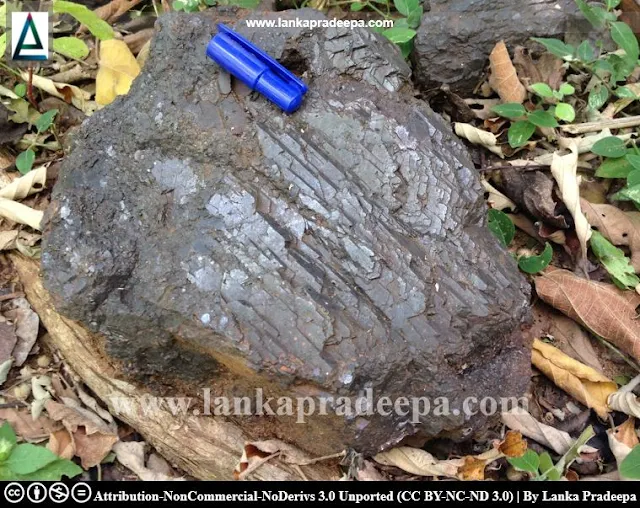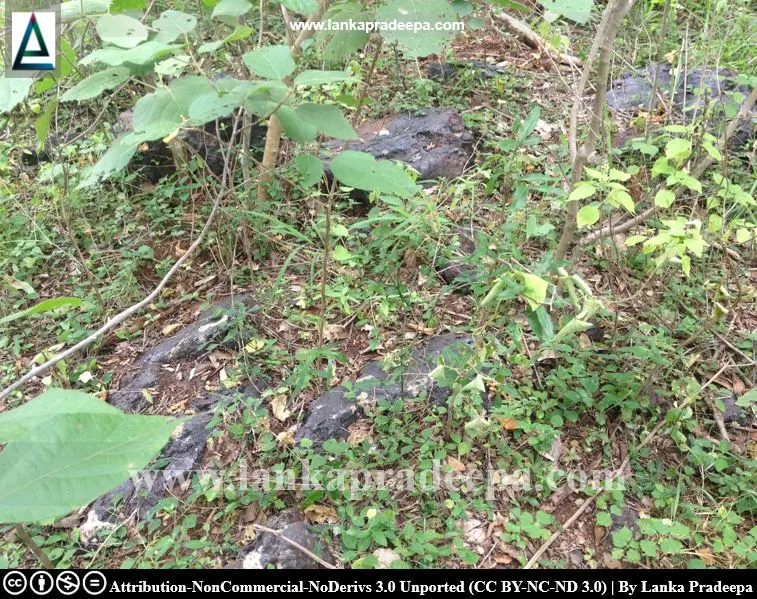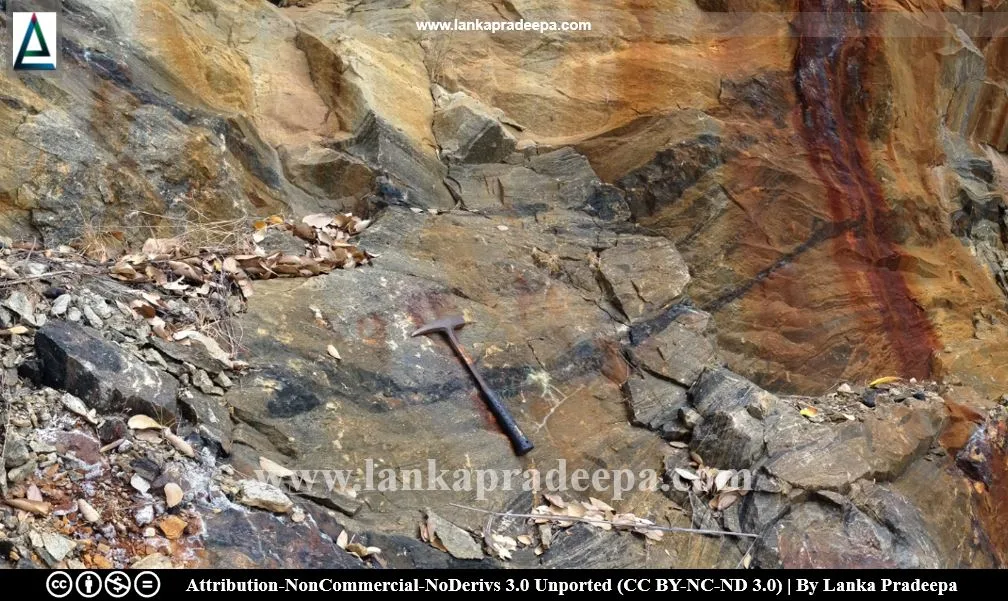
The Buttala iron ore deposit (Sinhala: බුත්තල යකඩ නිධිය) is exposed in the village of Kukurampola, Monaragala District, Sri Lanka. It is located about 15 km distance from Buttala town and closer to the Pelwatta Sugar Factory. The deposit is considered one of the Magnetite Deposits in the Country.
Iron Ores
Iron is a common rock-forming element on Earth. It constitutes about 5 % of the crustal materials (Kanellopoulos et al., 2018; Marion, 2012) and occurs in nature as different compounds such as oxides, carbonates, silicates, sulphides, etc. (Christie & Brathwaite, 1997). Natural iron deposits with good quality and quantity are used to extract iron and such occurrences are called iron ores (Kennedy, 1990; Summerfield, 2016; Yellishetty & Mudd, 2014).
Sri Lankan Iron Ore Deposits
The high-grade basement of Sri Lanka is composed of several iron ore deposits (Cooray, 1984). They can be grouped as; magnetite deposits, copper-magnetite
deposits, and hydrated iron oxide deposits (Cooray 1984, Herath, 1995).
Buttala Iron Ore Deposit

In 2001, a large primary magnetite deposit was discovered in the Kukurampola area in Buttala, Uva province (Senaratne et al., 2001). The site is located in the proximity of the lithotectonic boundary between the Highland Complex and the eastern Vijayan Complex of the Sri Lankan Precambrian basement (Senaratne et al., 2001). This boundary is a sub-horizontal ductile thrust zone (The National Atlas of Sri Lanka, 2007) where a number of geologic features are identified. They include major mineralization occurrences such as magnetite, serpentinite, gold, corundum, and calcite as well as formations of hot water springs (Widanagamage, 2011).
The Buttala iron ore deposit is exposed as a small mountain covering about 1 km2 surface area (Athisinghe et al., 2019; Manjula et al., 2020). Fresh ore bodies with sizes from 30 cm up to 3 m are mainly found along the ridge of the mountain and such exposures can be traced up to an average of 500 m distance (Manjula & Madugalla, 2018; Manjula et al., 2020). From the magnetometer investigations, it has been found that the deposit is not spread throughout the total mountain area but formed as a dyke dipping to the southeast direction (Hewathilake, 2013). The deposit is hosted in garnet biotite gneiss (Athisinghe et al., 2019).
According to the XRF data by Manjula et al., (2020), the Buttala iron ore deposit contains a high amount of Fe2O3 (78.84 wt. %) and minor amounts of Al2O3 (7.54 wt. %), SiO2 (4.4 wt. %), TiO2 (3.6 wt. %) and MgO [(2.54 wt. %) Manjula et al., 2020]. Magnetite and hematite are the main ore minerals presenting in the Buttala deposit (Athisinghe et al., 2019; Manjula & Madugalla, 2018; Manjula et al., 2020).




.
References
1) Athisinghe, A.M.J.N., Manjula, H.A.K.L., Hewathilake, H.P.T.S., Adikaram, A.M.N.M. and Madugalla, T.B.N.S., 2019. Geochemical pattern and mineral prospectivity mapping of an iron ore deposit in Buttala, Sri Lanka. Proceedings of the 35th Technical Session of Geological Society of Sri Lanka. p.37.
2) Christie, T. and Brathwaite, B., 1997. Mineral commodity report 15—Iron. NZ Min. pp.22-37.
3) Cooray, P.G., 1984. An introduction to geology of Sri Lanka (Ceylon). 2nd revised ed. Colombo; National Museum Department. pp.81-83, 211-212.
4) Herath, M.M.J.W., 1995. Economic geology Sri Lanka: Fifth edition, Ministry of Industrial Development, Colombo. pp.60-70.
5) Hewathilake, H.P.T.S., Cooray, J.T. and De Silva, S.N., 2013. Magnetometer Characterization of Iron Ore Deposit in Buttala, Sri Lanka. Proceedings to 29th Technical Sessions of Geological Society of Sri Lanka, 17, p.20.
6) Kanellopoulos, C., Valsami-Jones, E., Voudouris, P., Stouraiti, C., Moritz, R., Mavrogonatos, C. and Mitropoulos, P., 2018. A new occurrence of terrestrial native iron in the earth’s surface: The Ilia thermogenic travertine case, Northwestern Euboea, Greece. Geosciences, 8(8), p.287.
7) Kennedy, B.A., 1990. Surface mining. Society for mining, metallurgy, and exploration (U.S.). pp.48, 57, 60.
8) Manjula, H.A.K.L. and Madugalla, T.B.N.S., 2018. Mineral and chemical characterization of iron ore deposit in Buttala, Sri Lanka: implication for its economic potential. The 7th Annual Science Research Sessions (ASRS)-2018. South Eastern University of Sri Lanka. p.20.
9) Manjula, H.A.K.L., Marambe, M.K.A.Y.A., Madugalla, T.B.N.S., 2020. Economic appraisal of iron ore deposit in Buttala, Sri Lanka: Preliminary mineral and chemical evidence. Journal of Geological Society of Sri Lanka Vol. 21-1 (2020). pp.47-55.
10) Marion, J., 2012. Physical science in the modern world. Elsevier. p.117.
11) Senaratne, A., Dharmagunawardene, H.A., Fernando, W. A. R., 2001. Discovery of a new primary magnetite deposit in Wellawaya. Annual research sessions, University of Peradeniya, Sri Lanka (Vol. 6).
12) Summerfield, D., 2016. Australian resources review: Iron. Geoscience Australia, Canberra, Australia.
13) The national atlas of Sri Lanka, 2007. Second edition, Survey Department of Sri Lanka, ISBN: 955-9059-04-1, p.44.
14) Widanagamage, I.H., 2011. EMPA dating of monazite from high grade metamorphic rocks along the Highland-Vijayan boundary zone, Sri Lanka. MSc thesis, Kent State University. pp.17-18.
15) Yellishetty, M. and Mudd, G.M., 2014. Substance flow analysis of steel and long term sustainability of iron ore resources in Australia, Brazil, China and India. Journal of cleaner production, 84, pp.400-410.
2) Christie, T. and Brathwaite, B., 1997. Mineral commodity report 15—Iron. NZ Min. pp.22-37.
3) Cooray, P.G., 1984. An introduction to geology of Sri Lanka (Ceylon). 2nd revised ed. Colombo; National Museum Department. pp.81-83, 211-212.
4) Herath, M.M.J.W., 1995. Economic geology Sri Lanka: Fifth edition, Ministry of Industrial Development, Colombo. pp.60-70.
5) Hewathilake, H.P.T.S., Cooray, J.T. and De Silva, S.N., 2013. Magnetometer Characterization of Iron Ore Deposit in Buttala, Sri Lanka. Proceedings to 29th Technical Sessions of Geological Society of Sri Lanka, 17, p.20.
6) Kanellopoulos, C., Valsami-Jones, E., Voudouris, P., Stouraiti, C., Moritz, R., Mavrogonatos, C. and Mitropoulos, P., 2018. A new occurrence of terrestrial native iron in the earth’s surface: The Ilia thermogenic travertine case, Northwestern Euboea, Greece. Geosciences, 8(8), p.287.
7) Kennedy, B.A., 1990. Surface mining. Society for mining, metallurgy, and exploration (U.S.). pp.48, 57, 60.
8) Manjula, H.A.K.L. and Madugalla, T.B.N.S., 2018. Mineral and chemical characterization of iron ore deposit in Buttala, Sri Lanka: implication for its economic potential. The 7th Annual Science Research Sessions (ASRS)-2018. South Eastern University of Sri Lanka. p.20.
9) Manjula, H.A.K.L., Marambe, M.K.A.Y.A., Madugalla, T.B.N.S., 2020. Economic appraisal of iron ore deposit in Buttala, Sri Lanka: Preliminary mineral and chemical evidence. Journal of Geological Society of Sri Lanka Vol. 21-1 (2020). pp.47-55.
10) Marion, J., 2012. Physical science in the modern world. Elsevier. p.117.
11) Senaratne, A., Dharmagunawardene, H.A., Fernando, W. A. R., 2001. Discovery of a new primary magnetite deposit in Wellawaya. Annual research sessions, University of Peradeniya, Sri Lanka (Vol. 6).
12) Summerfield, D., 2016. Australian resources review: Iron. Geoscience Australia, Canberra, Australia.
13) The national atlas of Sri Lanka, 2007. Second edition, Survey Department of Sri Lanka, ISBN: 955-9059-04-1, p.44.
14) Widanagamage, I.H., 2011. EMPA dating of monazite from high grade metamorphic rocks along the Highland-Vijayan boundary zone, Sri Lanka. MSc thesis, Kent State University. pp.17-18.
15) Yellishetty, M. and Mudd, G.M., 2014. Substance flow analysis of steel and long term sustainability of iron ore resources in Australia, Brazil, China and India. Journal of cleaner production, 84, pp.400-410.
Location Map
This page was last updated on 6 July 2022

